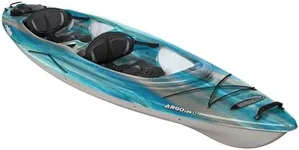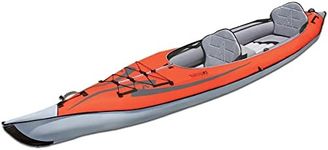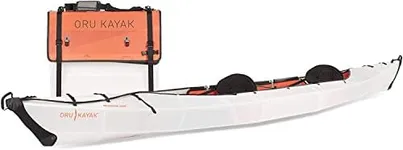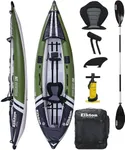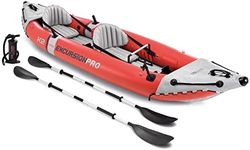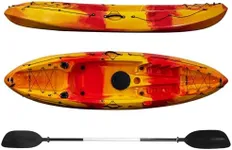Buying Guide for the Best Lightweight Tandem Kayaks
Choosing the right lightweight tandem kayak can greatly enhance your paddling experience, whether you're planning a leisurely day on the water or an adventurous expedition. The key is to understand the various specifications and how they align with your needs and preferences. Here are some important factors to consider when selecting a lightweight tandem kayak.WeightThe weight of the kayak is crucial, especially if you plan to transport it frequently or carry it over long distances. Lightweight kayaks are easier to handle and can be more convenient for solo loading and unloading. Typically, lightweight tandem kayaks range from 40 to 70 pounds. If you need to carry the kayak by yourself or have limited storage space, opt for a model on the lighter end of the spectrum. However, ensure that the lighter weight does not compromise the kayak's durability and stability.
MaterialThe material of the kayak affects its weight, durability, and performance. Common materials include polyethylene, fiberglass, and composite. Polyethylene is durable and affordable but heavier. Fiberglass is lighter and offers better performance but can be more expensive and less durable. Composite materials, such as carbon fiber, provide the best performance and are the lightest, but they are also the most expensive. Choose a material based on your balance of weight, durability, and budget considerations.
LengthThe length of a tandem kayak influences its speed, tracking, and storage capacity. Longer kayaks (over 14 feet) tend to be faster and track better, making them suitable for open water and longer trips. Shorter kayaks (under 14 feet) are more maneuverable and easier to transport, ideal for calm waters and shorter outings. Consider the type of water you'll be paddling in and the distance of your trips when selecting the length.
WidthThe width of the kayak affects its stability and speed. Wider kayaks (over 30 inches) offer more stability, making them suitable for beginners or those who prioritize stability over speed. Narrower kayaks (under 30 inches) are faster and more efficient in the water but can be less stable. If you're new to kayaking or plan to paddle in calm waters, a wider kayak may be more comfortable. For experienced paddlers or those looking for speed, a narrower kayak might be a better fit.
Seating ConfigurationTandem kayaks come with different seating configurations, including traditional tandem seating, convertible tandem-to-solo seating, and side-by-side seating. Traditional tandem seating has two seats in a line, which is common and works well for most paddlers. Convertible seating allows you to switch between tandem and solo paddling, offering flexibility. Side-by-side seating is less common but can be more social. Consider how you plan to use the kayak and who you'll be paddling with to choose the best seating configuration.
Storage and Weight CapacityThe storage and weight capacity of the kayak determine how much gear you can bring and the total weight it can safely carry. Tandem kayaks typically have higher weight capacities, ranging from 400 to 600 pounds. Ensure the kayak can accommodate the combined weight of both paddlers and any gear you plan to bring. Additionally, look for kayaks with ample storage options, such as hatches and bungee cords, to secure your belongings during your trip.
Hull DesignThe hull design of the kayak affects its performance in the water. Common hull designs include flat, rounded, V-shaped, and pontoon. Flat hulls offer great initial stability and are good for calm waters. Rounded hulls provide better secondary stability and are more efficient in rough waters. V-shaped hulls track well and are faster, suitable for open water. Pontoon hulls offer maximum stability, ideal for beginners. Choose a hull design based on the type of water you'll be paddling in and your skill level.

